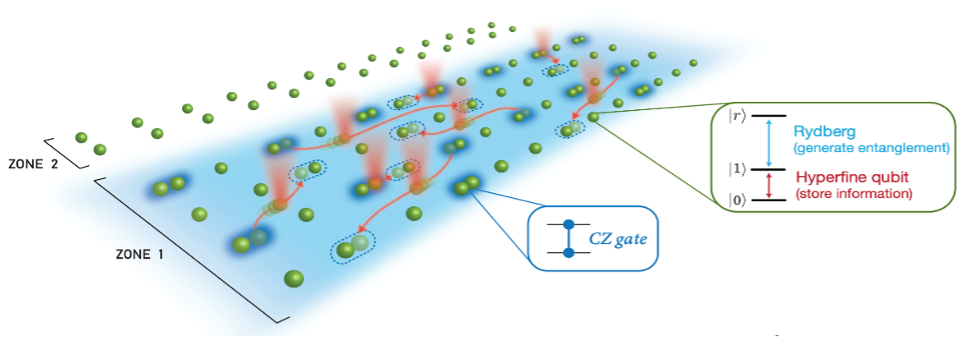Demonstrating the ability to shuttle ancilla arrays consisting of neutral atoms in optical tweezers, to realize a toric code state on a torus with 24 qubits. These results pave the way toward scalable quantum processing and enable new applications from simulation to metrology.
Impact: The ability to engineer parallel, programmable operations between desired qubits within a quantum processor is central for building scalable quantum information systems.

Summary: In most approaches, qubits interact locally, constrained by the connectivity associated with their fixed spatial layout. Here, we demonstrate a new quantum processor with dynamic, nonlocal connectivity, using neutral atoms in optical tweezers, in which qubits are coherently transported in parallel in a planar configuration between single- and two-qubit operations.
This architecture is used to realize various programmable entangled states such as the toric code state on a torus and to realize hybrid analog-digital evolution for quantum simulations.
Contact: Mikhail D. Lukin, lukin@physics.harvard.edu
Focus area: QIS Technology
Institutions: Harvard, MIT, University of Innsbruck, and QuEra
Citation: D. Bluvstein et al., “A quantum processor based on coherent transport of entangled atom arrays”, Nature 604, 451–456 (2022).
Funding acknowledgment: We acknowledge financial support from the Center for Ultracold Atoms, the National Science Foundation, the Vannevar Bush Faculty Fellowship, the US Department of Energy (DE-SC0021013 and DOE Quantum Systems Accelerator Center, contract number 7568717), the Office of Naval Research, the Army Research Office MURI (grant number W911NF-20-1-0082) and the DARPA ONISQ program (grant number W911NF2010021).